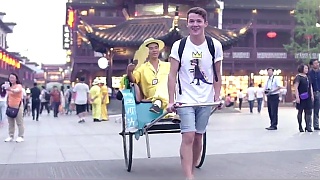With Walk East ...
[640],shadow=true,start=,stop=
Live more ...
 QuanZhou city, FuJian province
QuanZhou city, FuJian provinceWith Walk East ...
[640],shadow=true,start=,stop=

|
With Walk East ...
|

|
Discover life in NanJing, JiangSu province - parks, temples, transportation and more ...
Plus a beautiful time-lapse of NanJing ...
|

|
|

|
Beautiful ZhouZhuang lies in JiangSu province, about 30 km southeast of Suzhou.
|

|
With China Street View ...
With Walk East ...
With Ahead Of Thyme ...
|

|
A beautiful film by Wild Girl ...
|

|
NingXia ...
|

|
Beautiful. Traditional Chinese craftsmanship ...
|